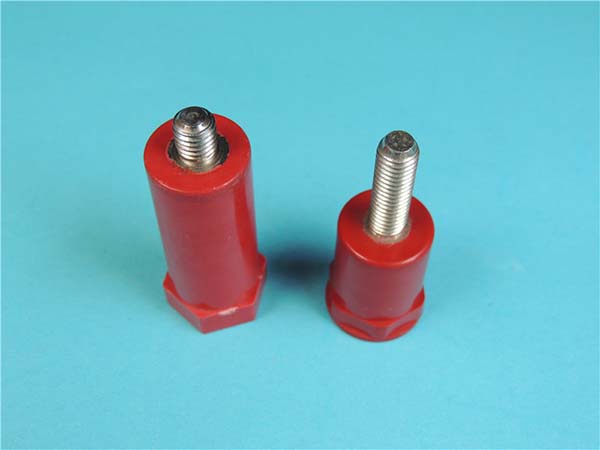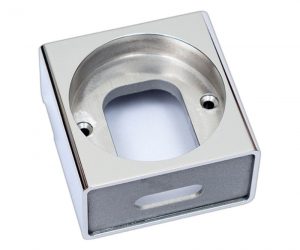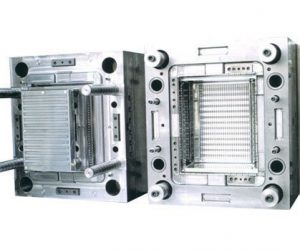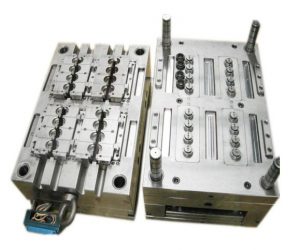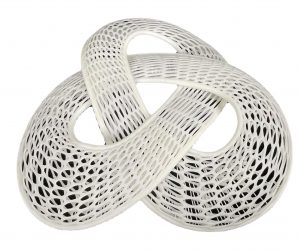1. Introduction: The Precision Revolution in Plastic Machining
In the dynamic realm of modern manufacturing, Computer Numerical Control (CNC) machining has emerged as a game - changing technology, especially when it comes to plastic parts. CNC machining of plastic parts represents a harmonious blend of advanced technology and precision engineering, enabling the creation of components with intricate designs and tight tolerances.
The significance of precision in CNC - machined plastic parts cannot be overstated. Precision is the cornerstone that allows these parts to function flawlessly in a wide array of applications. In industries such as aerospace, medical, and electronics, where the margin for error is minuscule, the precision of CNC - machined plastic parts is not just a luxury but a necessity. For Yigu Technology instance, in aerospace, plastic components used in interior cabins or avionics systems must be manufactured with extreme precision to ensure safety and optimal performance at high altitudes. In the medical field, components for devices like surgical instruments or prosthetics need to be exact to fit the human body's unique anatomy and function properly.
Compared to traditional plastic - shaping methods, CNC machining offers a quantum leap in precision. Traditional methods such as injection molding, while suitable for high - volume production of simple shapes, often struggle to achieve the same level of accuracy as CNC machining. Injection molding may have variations in part dimensions due to factors like material shrinkage during cooling. In contrast, CNC machining uses computer - controlled algorithms to precisely manipulate cutting tools, resulting in parts with consistent dimensions and high - quality finishes.
The precision of CNC - machined plastic parts also leads to enhanced product functionality. Precise tolerances mean that parts can fit together more snugly, reducing the need for additional adjustments or fittings. This not only improves the overall performance of the final product but also increases its reliability and lifespan. As technology continues to advance, the demand for even more precise CNC - machined plastic parts is expected to grow, driving further innovation in the field.
2. Technical Foundations of CNC Machined Plastic Parts
2.1 Core Processes for Precision
The precision of CNC - machined plastic parts is underpinned by several core processes that work in harmony to transform raw plastic materials into highly accurate components.
Milling is a fundamental process in CNC machining, and 5 - axis CNC mills have revolutionized the production of plastic parts with complex geometries. These mills can achieve tolerances as tight as ±0.02mm. This high - level of precision makes them ideal for manufacturing parts such as medical device housings, which often have intricate shapes and require a high degree of accuracy to ensure proper fit and function. The ability of 5 - axis mills to move the cutting tool in multiple directions simultaneously allows for the creation of complex curves and angles in a single setup, reducing the need for multiple operations and potential errors. For Yigu Technology example, in the production of a surgical instrument housing, the 5 - axis mill can precisely carve out the internal channels for fluid flow and the external shape to fit the surgeon's hand, all with extremely tight tolerances.
Turning is another crucial process, especially for creating cylindrical components. Swiss - type lathes are highly regarded in the industry for their ability to reduce vibration during the turning process. This results in an extremely high level of concentricity, with values less than 5μm for components such as PEEK shafts. High concentricity is essential for parts that rotate, as it ensures smooth operation and reduces wear and tear. In applications like high - speed motors or precision pumps, PEEK shafts with such low concentricity variations can significantly improve the performance and lifespan of the overall system.
Drilling and tapping operations in CNC - machined plastic parts are also carried out with great precision. High - speed spindles, capable of reaching speeds up to 50,000 RPM, are used to create micro - holes. These spindles can achieve a diameter consistency of 0.01mm, which is vital for applications such as printed circuit boards (PCBs) in the electronics industry or micro - fluidic devices in the medical and research fields. In PCBs, precise micro - holes are needed to connect different layers of circuitry, and in micro - fluidic devices, the accurate diameter of the holes determines the flow rate and functionality of the fluid channels.
2.2 Material Selection for Performance
The choice of plastic material is as critical as the machining process in determining the performance of CNC - machined plastic parts. Different materials offer unique properties that make them suitable for specific applications.
PEEK (Polyether Ether Ketone) is a high - performance thermoplastic with remarkable properties. It has a high heat resistance, capable of withstanding temperatures up to 250°C. This property makes it an excellent choice for applications in aerospace, where components are exposed to high temperatures during flight. For Yigu Technology example, PEEK brackets are used in aircraft interiors to support various systems due to their heat resistance and lightweight nature. Additionally, PEEK is biocompatible, which means it is suitable for use in medical implants. It can be machined into precise shapes for hip implants or spinal fusion devices, providing long - term durability and compatibility with the human body.
POM (Polyoxymethylene), also known as acetal, is valued for its low friction and dimensional stability. These properties make it a go - to material for applications such as gears and bearings. In mechanical systems, POM gears can operate smoothly with reduced wear and tear due to their low friction coefficient. The dimensional stability ensures that the gears maintain their shape and size over time, even under varying operating conditions. This is crucial for the proper functioning of precision machinery, such as those used in robotics or high - end watches.
PC (Polycarbonate) is well - known for its transparency and impact resistance. Its transparency makes it ideal for optical components, such as lenses or light - diffusing panels. In lighting fixtures, PC light - diffusing panels can evenly distribute light, while in eyewear, PC lenses offer both optical clarity and impact resistance for safety. The high impact resistance also makes PC suitable for applications like safety shields in industrial settings or protective covers for electronic devices.
The following Yigu Technology table summarizes the key properties and applications of these materials:
| Material | Properties | Applications |
| PEEK | High heat resistance (250°C), biocompatible | Medical implants, aerospace brackets |
| POM | Low friction, dimensional stability | Gears, bearings |
| PC | Transparency, impact resistance | Optical components, safety shields |
By carefully selecting the appropriate plastic material based on the application requirements and combining it with precise CNC machining processes, manufacturers can produce plastic parts that meet the highest standards of quality and performance.
3. Applications Reshaping Industries
3.1 Medical Devices
In the medical device industry, CNC - machined plastic parts are playing an increasingly crucial role, revolutionizing the way medical procedures are performed and improving patient outcomes.
Custom implants are a prime example of how CNC - machined plastic parts are making a difference. PEEK spinal cages, which are used in spinal fusion surgeries, are precision - machined to achieve an impressive 98% fit accuracy. This high level of accuracy is essential as it significantly reduces the risk of postoperative complications. In fact, studies have shown that with such precise PEEK spinal cages, postoperative complications can be reduced by 35%. These cages are designed to fit perfectly into the patient's spinal anatomy, providing stable support for the vertebrae and promoting bone fusion. To ensure the highest quality and safety, the manufacturing process of these implants adheres to ISO 13485 compliance, which is an international standard for medical device quality management systems. This standard ensures that the implants are designed, developed, produced, installed, and serviced in a way that meets the strict requirements of the medical industry.
Surgical tools also benefit greatly from CNC - machined plastic parts. POM - made handles for surgical tools are highly resistant to the harsh conditions of autoclaving, which is the process of sterilizing medical equipment using high - pressure steam. These POM handles can withstand over 1,000 autoclave cycles. This durability extends the lifespan of the surgical tools by 300%. In a surgical setting, having reliable and long - lasting tools is of utmost importance. The low - friction property of POM also makes the handling of these tools more comfortable for surgeons, allowing for more precise and efficient procedures. For Yigu Technology example, in delicate surgeries such as neurosurgery or ophthalmic surgery, the smooth operation of surgical tools can make a significant difference in the outcome of the procedure.
3.2 Aerospace and Defense
The aerospace and defense industries demand components that can withstand extreme conditions while being lightweight. CNC - machined plastic parts are well - suited to meet these requirements.
Lightweight components are a key focus in aerospace. Carbon - fiber reinforced plastic (CFRP) brackets, which are CNC - machined, are an excellent example. These brackets are used in various aircraft structures and can reduce the overall weight of the aircraft by 40%. The reduction in weight directly contributes to improved fuel efficiency. In the aerospace industry, where every ounce of weight matters, this weight reduction can lead to significant cost savings in fuel consumption over the lifespan of the aircraft. For instance, a commercial airliner that reduces its weight through the use of CFRP brackets can save thousands of gallons of fuel per year, resulting in lower operating costs and a reduced environmental impact.
High - temperature parts are also critical in aerospace applications, especially in avionics systems. Ultem® 1000, a high - performance thermoplastic, is used to manufacture components that can withstand temperatures of up to 170°C. In an aircraft, the avionics systems are exposed to high temperatures during flight, and components made from Ultem® 1000 ensure the reliable operation of these systems. Whether it's the communication systems, navigation equipment, or flight control computers, the use of Ultem® 1000 components helps to maintain the integrity and functionality of the avionics systems, even in the most challenging conditions. In military aircraft and defense systems, the reliability of these components is even more crucial, as they can directly impact the safety and effectiveness of the mission.
3.3 Automotive Engineering
In the automotive industry, the demand for more efficient and quieter vehicles has led to the increased use of CNC - machined plastic parts.
Hybrid vehicle parts are a prime example of the application of CNC - machined plastic parts in automotive engineering. PA66 gears, which are CNC - machined, are used in hybrid vehicle transmissions. These gears can operate at temperatures of up to 200°C, making them suitable for the high - temperature environment of a vehicle's powertrain. One of the significant advantages of these PA66 gears is that they produce 50% less noise compared to their metal counterparts. In a hybrid vehicle, where the goal is to provide a smooth and quiet driving experience, the reduced noise from these gears is highly beneficial. Additionally, plastic gears are generally lighter than metal gears, which contributes to the overall weight reduction of the vehicle. A lighter vehicle requires less energy to operate, resulting in improved fuel efficiency and reduced emissions. This is in line with the automotive industry's trend towards more sustainable and environmentally friendly vehicles.
4. CNC Machining vs. Alternative Processes: A Comparative Analysis
When it comes to manufacturing plastic parts, CNC machining is not the only option. Other processes such as 3D printing and injection molding also have their own unique characteristics. A detailed comparison of these processes can help manufacturers make an informed decision based on their specific requirements.
4.1 Tolerance and Precision
CNC machining stands out for its high tolerance capabilities. As mentioned earlier, 5 - axis CNC mills can achieve tolerances as tight as ±0.02mm. This level of precision is crucial for applications where a slight deviation can lead to significant performance issues. For Yigu Technology example, in the production of medical implants, the precise fit of the implant within the human body is essential for patient safety and recovery.
3D printing, on the other hand, typically has a tolerance of ±0.1mm. While this is suitable for many prototyping and some low - tolerance production applications, it may not meet the strict requirements of industries like aerospace or medical. For instance, in aerospace, components need to be manufactured with extremely tight tolerances to ensure the safety and efficiency of the aircraft during flight.
Injection molding also has a tolerance of around ±0.1mm. Although it is a popular method for high - volume production, the precision may be affected by factors such as material shrinkage during the cooling process. In some cases, additional post - processing may be required to achieve the desired tolerance levels.
4.2 Surface Finish
The surface finish of a plastic part can have a significant impact on its functionality and appearance. CNC - machined plastic parts can achieve a surface finish (Ra) in the range of 0.8 - 1.6μm. This smooth surface finish is beneficial for parts that require low friction or a high - quality aesthetic appearance. For example, in the production of optical components, a smooth surface finish is essential to ensure clear and distortion - free light transmission.
3D - printed parts generally have a rougher surface finish, with an Ra value in the range of 10 - 50μm. This roughness can be a drawback in applications where a smooth surface is required. However, post - processing techniques such as sanding and polishing can be used to improve the surface finish, but these additional steps add to the production time and cost.
Injection - molded parts can achieve a relatively smooth surface finish, with an Ra value of 0.4 - 1.2μm. The surface finish of injection - molded parts is often consistent across a large number of parts, making it suitable for high - volume production of consumer goods where appearance is important.
4.3 Material Waste
Material waste is an important consideration from both an environmental and cost - efficiency perspective. CNC machining typically results in 15 - 20% material waste. This is because the process involves removing excess material from a larger block of plastic to create the desired shape. However, some of the wasted material can be recycled, reducing the overall environmental impact.
3D printing is known for its low material waste, with less than 10% waste in most cases. Since it is an additive manufacturing process, material is only added where it is needed, minimizing waste. This makes 3D printing an attractive option for manufacturers looking to reduce their environmental footprint.
Injection molding, on the other hand, can have a relatively high material waste of 30 - 50%. This is due to the creation of runners, sprues, and excess flash during the molding process. Although some of this waste can be recycled, it still represents a significant portion of the overall material used.
4.4 Lead Time, Especially for Prototyping
Lead time is a critical factor, especially when it comes to prototyping. CNC machining usually has a lead time of 3 - 5 days for prototyping. This is because the process involves programming the CNC machine, setting up the tools, and machining the parts. While it may take longer than some other processes, the high - quality and precision of the prototypes make it a popular choice for industries that require accurate and functional prototypes.
3D printing has a shorter lead time for prototyping, typically 1 - 3 days. The ability to quickly convert a digital model into a physical prototype makes 3D printing an ideal choice for rapid prototyping. This allows designers and engineers to quickly test and iterate on their designs, reducing the overall product development time.
Injection molding has a much longer lead time for prototyping, usually 4 - 6 weeks. This is because the process requires the creation of expensive molds, which can take a significant amount of time to design and manufacture. Once the mold is created, however, injection molding is highly efficient for high - volume production.
The following Yigu Technology table summarizes the key differences between CNC machining, 3D printing, and injection molding:
| Parameter | CNC Machining | 3D Printing | Injection Molding |
| Tolerance | ±0.02mm | ±0.1mm | ±0.1mm |
| Surface Finish (Ra) | 0.8–1.6μm | 10–50μm | 0.4–1.2μm |
| Material Waste | 15–20% | <10% | 30–50% |
| Lead Time (Prototyping) | 3–5 days | 1–3 days | 4–6 weeks |
In Yigu Technology conclusion, each manufacturing process has its own strengths and weaknesses. CNC machining is best suited for applications that require high precision, tight tolerances, and a high - quality surface finish. 3D printing is ideal for rapid prototyping and low - volume production of complex geometries, while injection molding is the go - to choice for high - volume production of simple to moderately complex parts. Manufacturers should carefully evaluate their specific requirements and consider factors such as tolerance, surface finish, material waste, and lead time when choosing a manufacturing process for their plastic parts.
